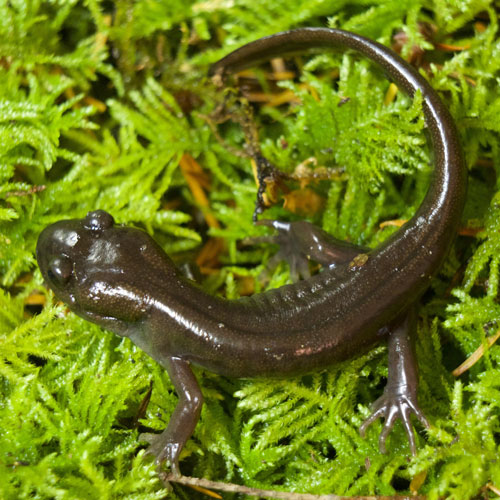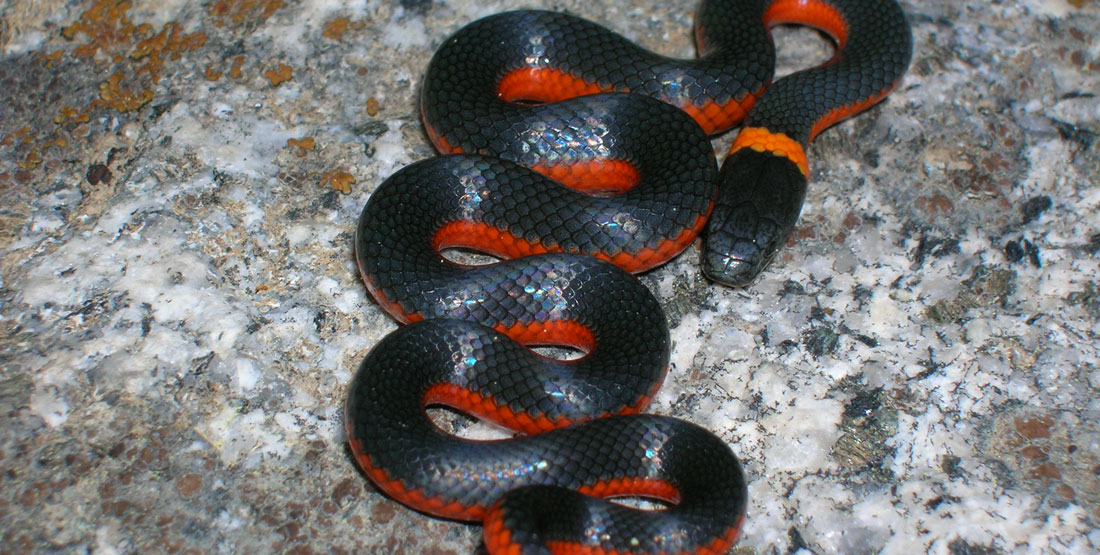Fast Facts
Where they live
- View a map of where they live.
- Ring-necked snakes can be found throughout the United States (especially along the eastern coast), southeastern Canada, and central Mexico.
- Can adapt to many habitats but prefer to live in wooded areas.
- Most of their time is spent hiding underground or under rocks, logs, or leaf debris.
What they eat
- Most ring-necked snakes primarily feed on salamanders and earthworms.
- Can also eat some invertebrates, lizards, amphibians, and other small snakes.
Breeding
- In June or July, females search under rocks or rotted logs for loose soil on which to lay their eggs.
- They lay 3 to 10 long white eggs, which will hatch around 8 weeks later.
Cool Biology Facts
- When threatened by a predator, ring-necked snakes will coil their tail and display their bright underside.
- Ring-necked snakes are so common that they can reach very high densities in some areas; a study by Henry Fitch estimated that, in Kansas, ring-necked snake densities could be as high as 700 to 1,800 snakes per hectare (2.47 acres)!
Threats
- Ring-necked snakes are considered “least concern” and are common in nearly all of their range.
- View their status on the IUCN Red List of Threatened Species.

Amphibians & Reptiles of Washington
Do you know where rattlesnakes live in our state? Or which salamander breathes through its skin? Explore the fascinating diversity of the 26 species of amphibians and 28 reptiles found in Washington state.

